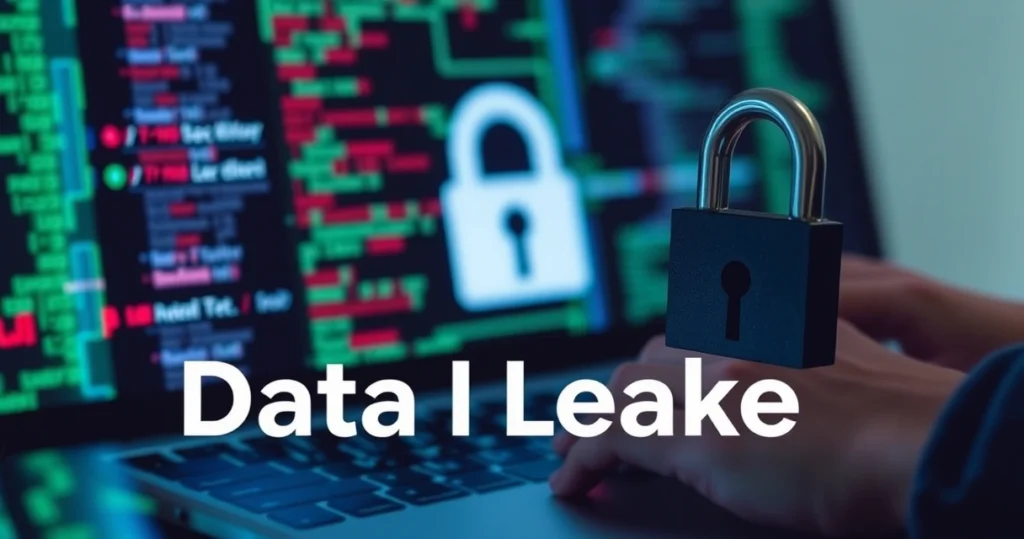In today’s digital age, the security of personal data is a paramount concern. A data breach can lead to unauthorized access to sensitive information such as passwords, email addresses, and banking details. When personal data is leaked, it creates a fertile ground for identity theft and various forms of cybercrime. Therefore, understanding the essential steps to take immediately after a data breach is crucial for protecting your privacy and mitigating potential damages.

This article will guide you through the critical actions to take if you find yourself in the unfortunate situation of a personal data leak. We will explore preventative measures, immediate responses, and long-term strategies for safeguarding your personal information. By being proactive and informed, you can significantly reduce the risks associated with data breaches.
Understanding Data Breaches
A data breach occurs when unauthorized individuals gain access to sensitive, protected, or confidential data. This can happen due to various reasons, including hacking, malware attacks, or even human error. Personal data that is commonly targeted includes:
- Social Security numbers
- Bank account information
- Email addresses and passwords
- Credit card details
- Personal identification numbers (PINs)
It is essential to recognize that a data breach can happen to anyone, regardless of the size of the organization or the security measures in place. Therefore, understanding how to respond effectively is crucial for personal data security.
Immediate Actions to Take After a Data Breach
1. Confirm the Breach
The first step in responding to a data breach is to confirm the details of the breach. This could involve:
- Checking for official notifications from companies that may have been involved.
- Monitoring your email accounts for alerts regarding unauthorized access.
- Reviewing any suspicious activities on your online accounts.
2. Change Your Passwords
Once you confirm a breach, immediately change the passwords for any affected accounts. Use strong, unique passwords that combine letters, numbers, and special characters. Consider using a password manager to keep track of your passwords and generate secure combinations. Additionally, enable two-factor authentication (2FA) wherever possible for an extra layer of security.
3. Monitor Your Accounts
After changing your passwords, closely monitor your financial accounts and credit reports for any unusual or unauthorized activities. This includes:
- Reviewing bank statements for unfamiliar transactions.
- Checking credit reports for new accounts opened in your name.
- Setting up alerts for transactions above a certain threshold.
4. Contact Relevant Institutions
Depending on the nature of the breach, you may need to contact various institutions, including:
- Your bank or credit union to report potential fraud.
- Credit card companies to dispute unauthorized charges.
- Identity theft protection services to monitor your information.
Long-term Strategies for Personal Data Protection
1. Sign Up for Identity Theft Protection Services
Identity theft protection services can offer monitoring of your personal information, alerting you to any signs of misuse. These services can assist in recovering your identity should it be compromised, providing peace of mind in an increasingly digital world.
2. Educate Yourself on Cybersecurity Measures
Staying informed about cybersecurity is vital for preventing future breaches. Familiarize yourself with common tactics used by cybercriminals, such as phishing scams and social engineering. This knowledge can help you recognize potential threats and avoid falling victim to them.
3. Regularly Update Your Software
Keeping your software and devices updated is crucial for maintaining security. Regular updates often include security patches that protect your devices from vulnerabilities. Make it a habit to install updates for your operating system, antivirus software, and applications promptly.
4. Use Secure Connections
When accessing sensitive information online, ensure you are using a secure connection. Avoid public Wi-Fi for financial transactions or accessing sensitive accounts. If necessary, use a Virtual Private Network (VPN) to encrypt your internet connection and protect your data from potential eavesdroppers.
Important Points to Remember
- Immediately confirm the breach and change passwords for affected accounts.
- Monitor your financial accounts for unusual activities.
- Contact relevant institutions to report potential fraud.
- Consider signing up for identity theft protection services.
- Educate yourself on cybersecurity best practices and stay updated on software.
Frequently Asked Questions (FAQs)
1. What should I do if I suspect my personal data has been compromised?
If you suspect a data breach, immediately change your passwords, monitor your accounts, and report any suspicious activity to your bank or credit card company.
2. How can I tell if my data has been leaked?
You may receive notifications from companies, see unusual activities in your accounts, or find your information on data breach notification sites. Regularly checking your credit reports can also help identify unauthorized accounts.
3. Are there any legal actions I can take after a data breach?
Depending on the situation, you may have legal recourse against organizations that fail to protect your data adequately. Consult with a legal professional specializing in data privacy for guidance.
4. Can I recover my identity after an identity theft incident?
Yes, many identity theft protection services can help you recover your identity. They provide resources and guidance for disputing fraudulent charges and restoring your credit.
5. How can I prevent future data breaches?
Preventative measures include using strong passwords, enabling two-factor authentication, regularly updating your software, and being cautious about sharing personal information online.
Conclusion
Experiencing a personal data leak can be alarming and overwhelming, but taking immediate and informed actions can help mitigate the risks associated with such incidents. By confirming the breach, changing your passwords, and monitoring your accounts, you can take the first critical steps toward protecting your personal information. Furthermore, adopting long-term strategies, such as utilizing identity theft protection services and staying informed about cybersecurity, will empower you to safeguard your privacy effectively.
Remember, the key to personal data security lies not only in reactive measures but also in proactive strategies that can prevent breaches from occurring in the first place. Stay vigilant, stay informed, and protect your personal data.
📰 Original Source
Este artigo foi baseado em informações de: https://tecnoblog.net/responde/o-que-fazer-em-caso-de-vazamento-de-dados-pessoais/



